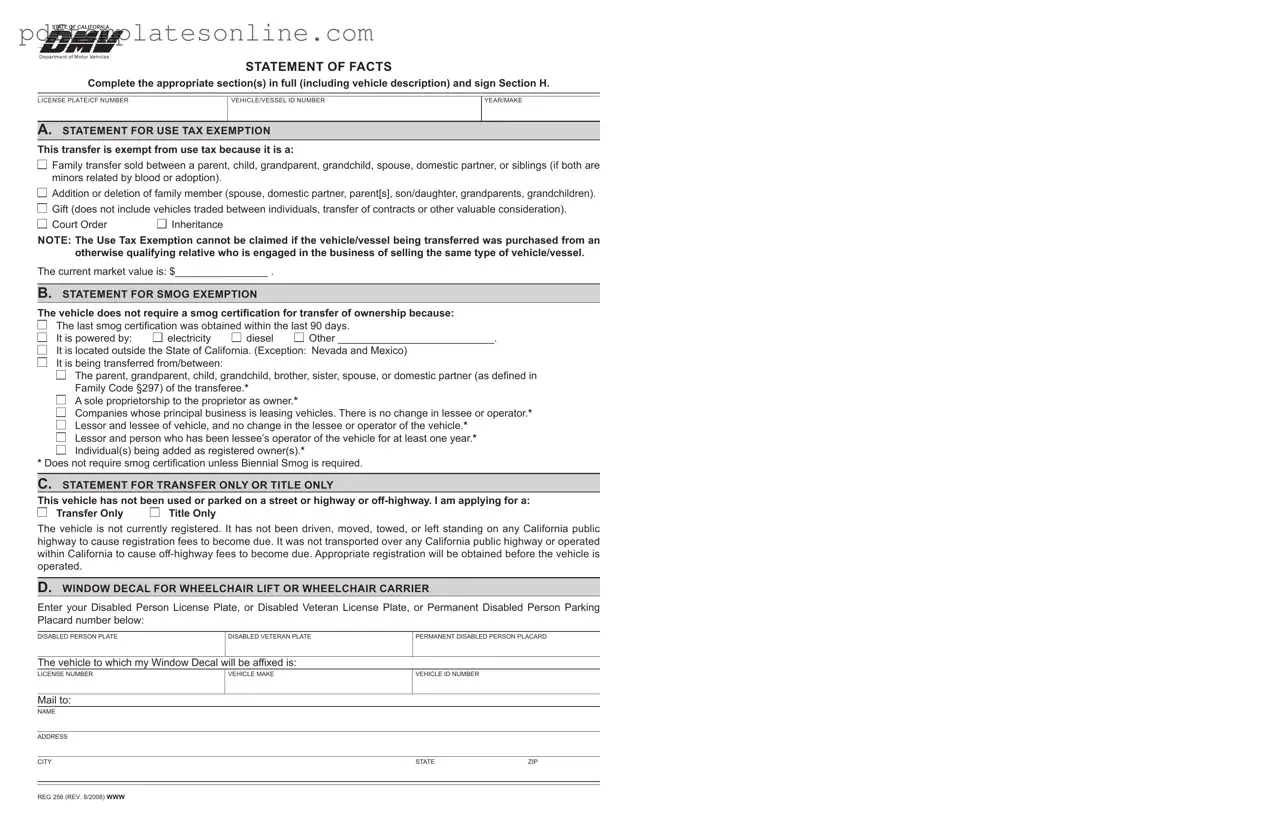Filling out the DMV Reg 256 form can be straightforward, but many people make mistakes that can delay their application or cause issues down the line. Here are nine common mistakes to avoid.
One frequent error is failing to provide complete information. Each section must be filled out in full, including vehicle details. If any part is left blank, it could result in processing delays. Ensure that every required field is addressed before submitting the form.
Another mistake is not signing Section H. This section is crucial as it certifies the accuracy of the information provided. Without a signature, the DMV may reject the form, requiring you to start over.
People often overlook the specific exemptions related to use tax. For example, if you claim a family transfer exemption, you must select the correct box and understand the definitions. Misunderstanding these criteria can lead to unnecessary tax liabilities.
Additionally, individuals sometimes fail to provide the current market value of the vehicle or vessel. This figure is important for various exemptions and must be filled in accurately. If omitted, it may raise questions or complicate the transaction.
When applying for a smog exemption, many forget to check the appropriate box that applies to their situation. There are several conditions under which a vehicle may be exempt from smog certification. Ensure you read each option carefully and select the one that fits your case.
Another common mistake is misunderstanding the requirements for a title-only transfer. If the vehicle has been used on public highways, it cannot be transferred without proper registration. Failing to acknowledge this can lead to complications later.
Some applicants incorrectly assume that a name correction does not require additional documentation. If your name is misspelled, you must provide the correct spelling clearly. If you are changing your name, supporting documents may also be needed.
People also sometimes neglect to include their contact information. A daytime phone number is essential for the DMV to reach you if there are any questions or issues with your application. Missing this detail can lead to delays.
Finally, many individuals do not keep a copy of the completed form for their records. Having a copy can help if any questions arise later or if you need to refer back to the information provided. Always keep a personal record of submitted documents.
